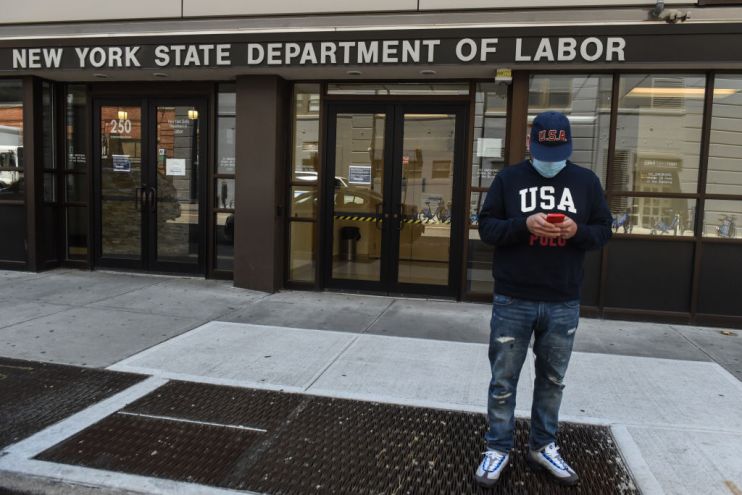Nonfarm payrolls: US unemployment soars as 21m Americans lose jobs

More than 20m Americans lost their jobs in April, official “nonfarm payrolls” data has shown, as the world’s largest economy was battered by coronavirus and the lockdowns put in place to stop it spreading.
The 20.5m job losses sent the unemployment rate soaring to 14.7 per cent, the US Bureau of Labor Statistics (BLS) said, by far the worst number seen since the Great Depression. Unemployment stood at a 50-year low of 3.5 per cent just two months ago.
“The changes in these measures reflect the effects of the coronavirus pandemic and efforts to contain it,” the BLS said.
“Employment fell sharply in all major industry sectors, with particularly heavy job losses in leisure and hospitality.”
The services sector bore the brunt of the pain. In April, employment in leisure and hospitality plummeted by 7.7m or 47 per cent. Almost three-quarters of the decrease occurred in food services and drinking places, the BLS said.
More than 1m jobs were shed in the arts, entertainment, and recreation industry and more than 800,000 were axed from the accommodation sector.
More job losses are set to come. Week-by-week data has shown the number of new jobless claims soaring. Figures yesterday indicated that roughly 33m Americans have claimed unemployment insurance in the last seven weeks.
Today’s BLS data, which covers the month of April, showed by far the steepest job losses since the Second World War.
In the worst month of the financial crisis, around 800,000 Americans lost their jobs. The worst monthly loss on record was close to 2m in 1945 as World War II ended.
The nonfarm payrolls report is the clearest picture yet of the devastating impact of the coronavirus pandemic on the US economy. The data is based on surveys of households and businesses and provides the most complete estimate of job losses so far.
Richard Flynn, UK managing director at Charles Schwab, said today’s figures show “jaw-dropping levels of unemployment”.
“While the US Federal Reserve has used its full range of tools to support the US economy, it is clear now that the economic repercussions of this downturn are far greater than anticipated and will be felt long after employees have returned to work.”